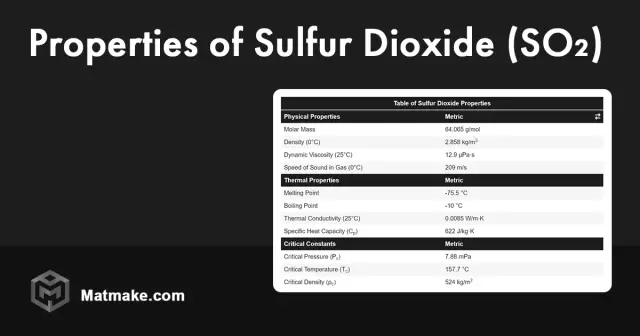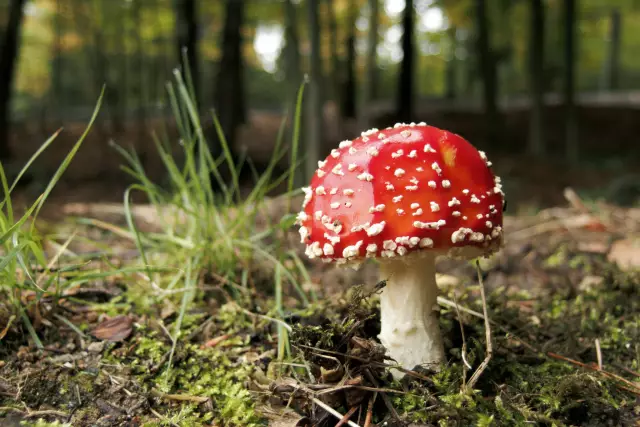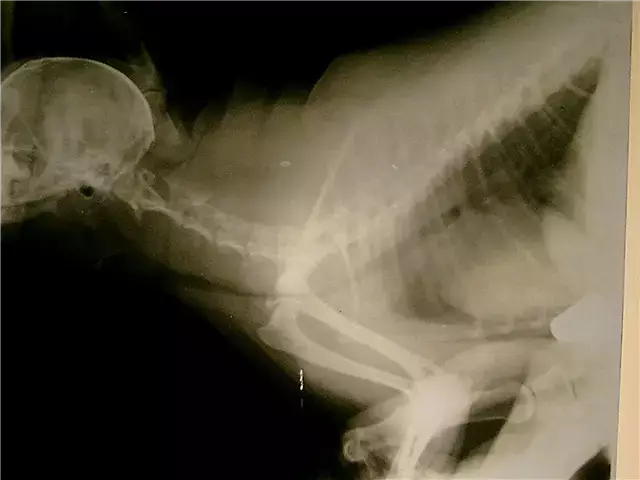- Author Rachel Wainwright [email protected].
- Public 2023-12-15 07:39.
- Last modified 2025-11-02 20:14.
sulphur dioxide

Sulfur dioxide is a colorless, pungent odor gas used as a preservative in the food industry. Its chemical formula is SO 2. The common name of the preservative used for labeling products containing sulfur dioxide is E220. Other names for the additive that can be found on food labels are sulfites, sulfurous acid, sulfur dioxide, sulfur dioxide.
The preservative sulfur dioxide dissolves in water, ethanol and sulfuric acid.
The use of sulfur dioxide in the food industry
Sulfur dioxide E220 is used in the meat processing industry, for the preparation of vegetables and fruits, for the production of wines and other drinks. The wine industry is one of the main consumers of sulfur dioxide preservative, and we will talk about this later.
Meat manufacturers use sulfur dioxide to process raw materials so that bacteria do not appear in them. A side effect of sulfites is that they prevent meat from changing color, which often misleads buyers about its freshness.
In the production of products from fruits and berries, sulfur dioxide E220 is used as an intermediate preservative, which is used to process fruits before processing (fruit puree, whole and cut fruits). Thus, the final product contains a minimum amount of preservative. Dried fruits are also treated with sulfur dioxide so that they are better stored and do not lose their presentation. Almost all citrus fruits are processed with E220 before transportation.
You should also be aware that the rare production of juices, beer and other non-alcoholic, alcoholic beverages does without sulfur dioxide.
Adding a preservative to freshly squeezed juices prevents the appearance of mold and acetic acid bacteria.
For preventive purposes, sulfur dioxide is used to treat rooms where fruits and vegetables are stored, and to clean containers for storing wines and other drinks.
Sulfur dioxide in wine
It is a common practice that the preservative is sulfur dioxide in wine. Today, only expensive, so-called biodynamic wines are produced without E220 preservative.

How can you justify the presence of sulfur dioxide in wine? The addition of E220 to the wort helps to stabilize its microflora and prevent oxidation.
If you adhere to acceptable standards, the preservative sulfur dioxide cannot harm a person who drinks wine containing E220. For some reason, it is believed that the headache that appears after wine is due to the presence of a preservative in it. This theory can only be applied to those wines in which the sulfur dioxide content is several times higher than the norm. Today, 300 mg of preservative per 1000 ml of wine is considered the norm. Wine producers, trying to please the consumer, try not only not to overstate the norm, but also to minimize the amount of sulfur dioxide in their products and leave it at the level of 200-250 mg / kg.
Sulfur dioxide - harm
They do not hide from consumers that sulfur dioxide is a toxic chemical compound of the third hazard class. People who are sensitive to the preservative, or those who have exceeded its dosage or have used it for a long time, may experience a variety of negative reactions: pulmonary edema in the acute stage, vomiting, runny nose, choking, speech impairment, cough, diarrhea, dizziness, headache, nausea, heaviness in the stomach.
The main harm of sulfur dioxide to the human body is that it destroys vitamin B1 and proteins.
Asthmatics should be wary of eating foods processed or containing sulfur dioxide - the substance can cause severe allergic reactions in them. Therefore, it is important to carefully study the information on the food and alcohol label. Dried fruits and fresh fruits or vegetables treated with sulfites should be washed well before use and heated for 5-10 minutes in clean hot water (95-100 ° C). This is one of the desulphitation methods used in production.
The permissible rate of sulfur dioxide in foods that are constantly consumed is 100 mg / kg.
Found a mistake in the text? Select it and press Ctrl + Enter.






